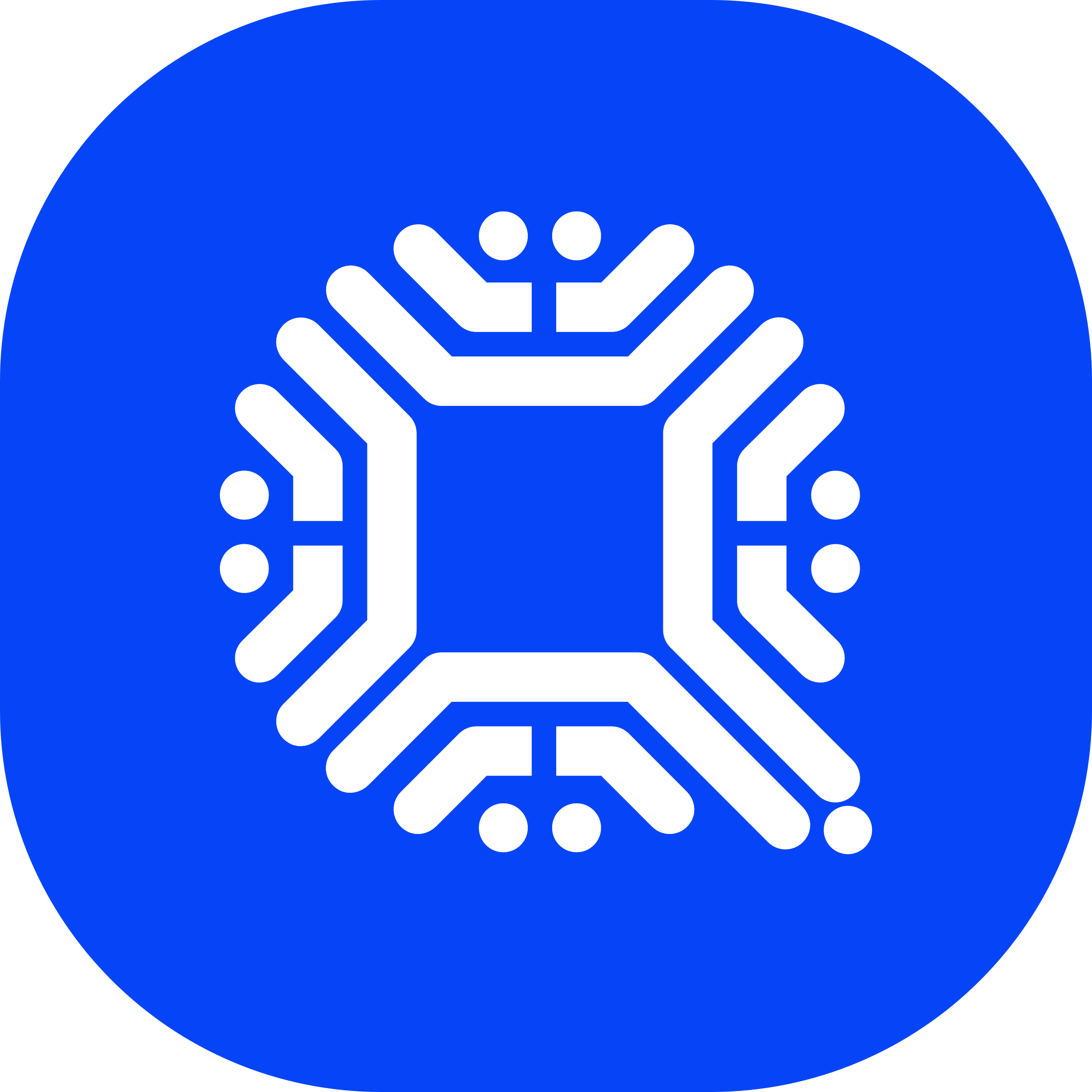-
 Bitcoin
Bitcoin $99,034.2885
0.73% -
 Ethereum
Ethereum $2,807.9014
0.38% -
 XRP
XRP $2.4511
-4.03% -
 Tether USDt
Tether USDt $1.0008
0.04% -
 Solana
Solana $200.5440
-2.82% -
 BNB
BNB $579.9027
0.86% -
 USDC
USDC $1.0004
0.04% -
 Dogecoin
Dogecoin $0.2632
-1.70% -
 Cardano
Cardano $0.7560
-1.71% -
 TRON
TRON $0.2321
2.29% -
 Chainlink
Chainlink $19.7401
-1.06% -
 Avalanche
Avalanche $26.4760
-2.86% -
 Sui
Sui $3.4625
-4.49% -
 Stellar
Stellar $0.3365
-3.06% -
 Toncoin
Toncoin $3.8601
-0.53% -
 Hedera
Hedera $0.2450
-4.41% -
 Shiba Inu
Shiba Inu $0.0...01586
-3.55% -
 UNUS SED LEO
UNUS SED LEO $9.8214
0.73% -
 Hyperliquid
Hyperliquid $25.5491
-3.63% -
 Bitget Token
Bitget Token $6.7824
3.54% -
 Litecoin
Litecoin $106.8073
0.50% -
 Polkadot
Polkadot $4.7581
-1.43% -
 Bitcoin Cash
Bitcoin Cash $330.2563
-1.89% -
 Ethena USDe
Ethena USDe $1.0005
0.10% -
 MANTRA
MANTRA $5.8815
1.18% -
 Uniswap
Uniswap $9.3418
-1.22% -
 Dai
Dai $1.0002
0.03% -
 Ondo
Ondo $1.3868
-3.76% -
 Pepe
Pepe $0.0...09998
-3.09% -
 Monero
Monero $225.5976
0.56%
Is there a burning mechanism for Telos (TLOS) coins?
Telos' token burning mechanisms involve repurchase and burns, transaction fee allocations, and DApp development fund burn allocations, reducing TLOS supply and potentially increasing scarcity.
Dec 25, 2024 at 10:44 pm

Key Points:
- Understanding Token Burning Mechanisms
- Burning Mechanisms for Major Cryptocurrencies
- Impact of Token Burning on TLOS Supply and Value
- Steps to Calculate Burn Rate and Impact
- Alternative Methods to Control Coin Supply
- Frequently Asked Questions about TLOS Token Burning
Introduction: Token Burning Mechanisms and Telos (TLOS)
Telos (TLOS) is a blockchain platform designed for decentralized applications (dApps) and smart contract execution. To enhance its network performance and drive token value, Telos implemented a token burning mechanism. This article explores the concept of token burning, its implementation in Telos, and how it affects TLOS coin supply and market dynamics.
1. Understanding Token Burning Mechanisms
Token burning refers to the intentional removal of tokens from circulation by sending them to an inaccessible address (often referred to as a "burn address" or "null address"). This process reduces the total supply of available tokens. Burning can be used for various purposes, including:
- Reducing inflation by limiting the token supply
- Increasing scarcity and potential value appreciation
- Boosting network performance by reducing transaction fees
- Incentivizing long-term holding and reducing volatility
2. Burning Mechanisms for Major Cryptocurrencies
Token burning has become prevalent among major cryptocurrencies. Some notable examples include:
- Bitcoin (BTC): BTC does not have an official burning mechanism. However, some miners and companies occasionally burn small amounts of BTC to promote scarcity and drive price appreciation.
- Ethereum (ETH): Ethereum implemented a burning mechanism in August 2021 through EIP-1559. A portion of the transaction fees is burned during on-chain operations, reducing ETH supply.
- Binance Coin (BNB): BNB has a regular burning mechanism where Binance periodically repurchases and burns large quantities of tokens, reducing supply and potentially supporting price stability.
3. Impact of Token Burning on TLOS Supply and Value
The Telos token burning mechanism involves removing TLOS coins from circulation through various processes.
- Transaction Fees: A portion of the transaction fees collected on the Telos blockchain is allocated to a burning address. This reduces the TLOS supply and potentially increases scarcity.
- Buyback and Burn: The Telos Foundation periodically repurchases and burns TLOS from the open market, effectively reducing circulating supply.
- DApp Development Fund: A percentage of the DApp development fund is przeznaczone to be burned, further restricting TLOS circulation.
By reducing TLOS supply, burning can potentially lead to increased demand, scarcity, and a higher market value for the remaining tokens. However, it's important to note that token burning alone does not guarantee price appreciation and depends on various other factors.
4. Steps to Calculate Burn Rate and Impact
To calculate TLOS burn rate, follow these steps:
- Determine the amount of TLOS burned during each burning event.
- Sum up the TLOS burned over a given period, such as monthly or quarterly.
- Divide the total TLOS burned by the period duration to get the average burn rate.
To estimate the potential impact of burning, consider the following:
- Supply Reduction: Calculate the percentage of TLOS supply that will be burned over a given period.
- Demand Constant: If demand remains stable, a reduction in supply could increase scarcity and drive up prices.
- Demand Increase: If burning encourages long-term holding and attracts new investors, demand may increase, further boosting token value.
5. Alternative Methods to Control Coin Supply
Besides burning, other methods to control coin supply include:
- Mining Reward Halving: Reducing the number of coins rewarded to miners periodically, as in the case of Bitcoin.
- Token Lockups: Restricting a portion of token supply for a set period, preventing immediate circulation.
- Deflationary Algorithms: Designing tokens with an inherent mechanism that reduces supply over time, such as transaction-based burn mechanisms in some stablecoins.
FAQs on TLOS Token Burning
Q: How often does Telos perform token burns?
A: Telos utilizes a continuous burning mechanism, with transaction fees and other mechanisms continuously burning TLOS.
Q: Where can I track the progress of TLOS token burns?
A: Telos maintains a live burn tracker on their website, displaying the number of tokens burned and the cumulative supply reduction.
Q: How does token burning affect TLOS transaction fees?
A: By reducing the TLOS supply, burning can potentially increase scarcity, leading to higher transaction fees. However, it also depends on factors such as network demand and the overall cryptocurrency market conditions.
Q: Is there a risk of TLOS becoming deflationary due to burning?
A: Telos aims to balance burning with adoption and growth. The burn rate is carefully evaluated to avoid excessive supply reduction and potential deflationary effects.
Q: Does burning TLOS guarantee an increase in token value?
A: While burning can potentially contribute to increased scarcity and value appreciation, it is not a sole driver of price movements. The market value of TLOS is influenced by various factors, including overall market trends, adoption, and user demand.
Disclaimer:info@kdj.com
The information provided is not trading advice. kdj.com does not assume any responsibility for any investments made based on the information provided in this article. Cryptocurrencies are highly volatile and it is highly recommended that you invest with caution after thorough research!
If you believe that the content used on this website infringes your copyright, please contact us immediately (info@kdj.com) and we will delete it promptly.
- Solana Meme Coin Deployer Pump.fun Faces Legal Heat as Cease-and-Desist Letter Alleges IP Violations
- 2025-02-06 19:36:03
- FX Guys ($FXG) Surpasses Solana (SOL) and Sui (SUI) as 2025’s Top Staking Platform
- 2025-02-06 19:36:03
- New Findings Suggest a Possible Link Between Bitcoin's Creator and Kraken
- 2025-02-06 19:36:03
- Bitcoin (BTC) Tumbles Below $100,000, Triggering $2B Industry-Wide Liquidations
- 2025-02-06 19:36:03
- Memecoins Poised for a Major Resurgence, Dogecoin (DOGE) and Floki Inu (FLOKI) Expected to See Significant Price Rallies
- 2025-02-06 19:36:03
- Germany's Election: How the Parties Plan to Reshape Finance
- 2025-02-06 19:26:03
Related knowledge
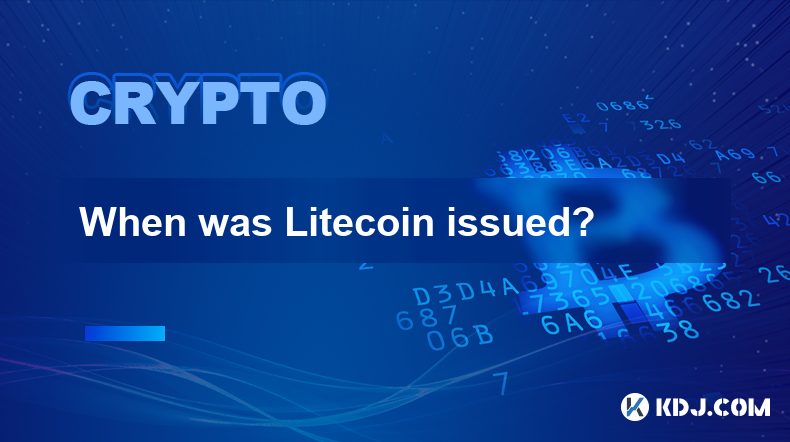
When was Litecoin issued?
Feb 04,2025 at 02:36am
When was Litecoin Issued?Key Points:Litecoin's inception and developmentLitecoin's launch date and market dynamicsLitecoin's technical specifications and key featuresLitecoin's Inception and DevelopmentLitecoin, conceived by former Google engineer Charlie Lee, emerged as a fork of Bitcoin in October 2011. Inspired by Bitcoin's revolutionary blockchain t...
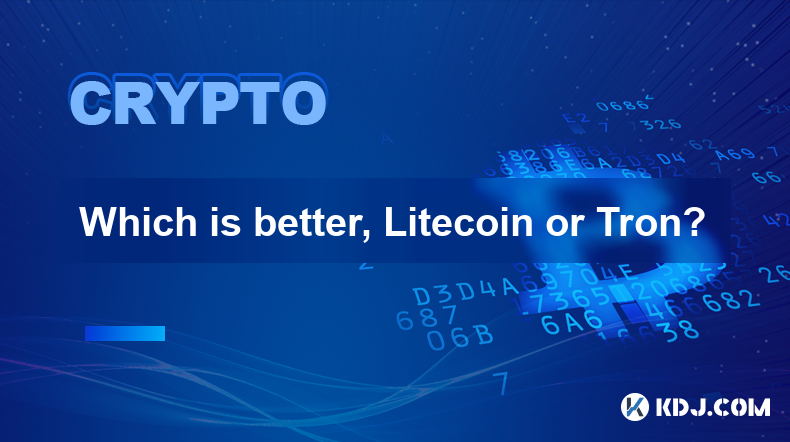
Which is better, Litecoin or Tron?
Feb 04,2025 at 10:30pm
Key Points:Similarities between Litecoin and Tron: Decentralized, open-source blockchain platformsDifferences between Litecoin and Tron: Use cases, consensus mechanisms, transaction speedsFactors to consider when choosing between Litecoin and Tron: Investment goals, risk tolerance, specific use casesPotential benefits and drawbacks of Litecoin and Tron:...
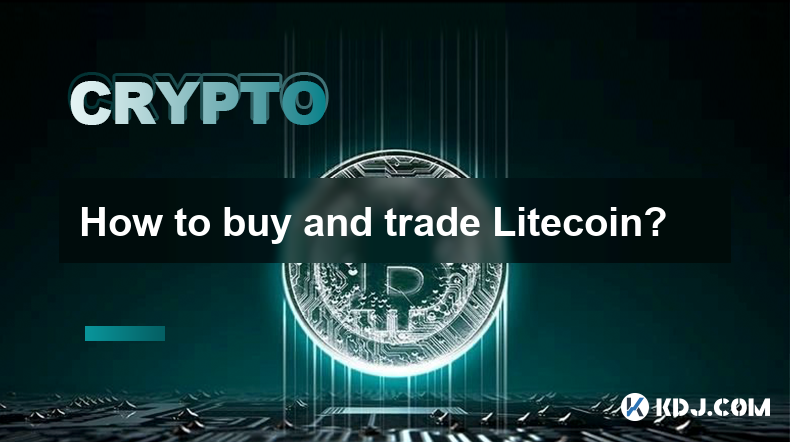
How to buy and trade Litecoin?
Feb 04,2025 at 12:24pm
Key Points:Understand the Basics of LitecoinSelect a Suitable Cryptocurrency ExchangeCreate an Account on the ExchangeFund Your AccountPlace a Buy Order for LitecoinSecurely Store Your LitecoinUnderstand Litecoin TradingHow to Buy Litecoin?1. Understand the Basics of LitecoinLitecoin (LTC) is a decentralized digital currency similar to Bitcoin.Created i...
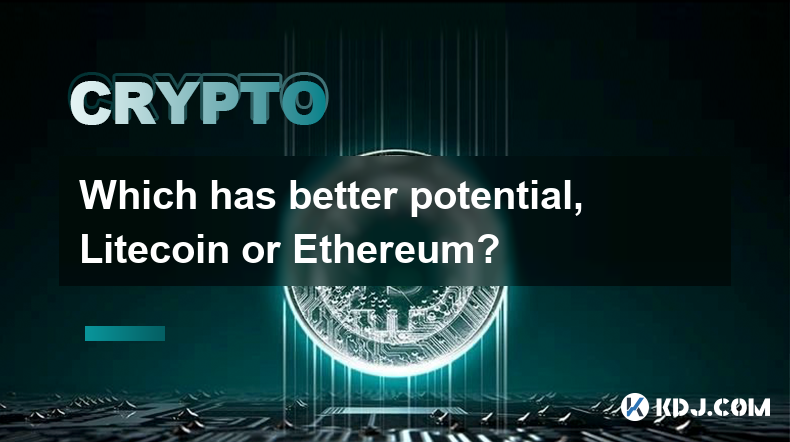
Which has better potential, Litecoin or Ethereum?
Feb 04,2025 at 05:30pm
Key Points:Litecoin and Ethereum are two of the most popular cryptocurrencies in the world.Both coins have their own unique advantages and disadvantages.Litecoin is a faster and cheaper transaction coin than Ethereum.Ethereum is a more versatile platform than Litecoin, and it can be used to create decentralized applications (dApps).Litecoin has a long h...
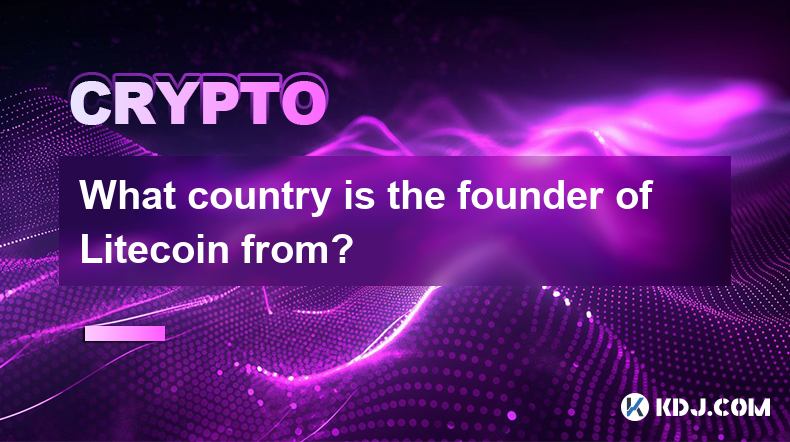
What country is the founder of Litecoin from?
Feb 04,2025 at 05:55am
Key Points:Litecoin's Founder and the Relationship with Charles LeeLitecoin's Technical Features and Similarities to BitcoinLitecoin's Role in the Cryptocurrency Ecosystem and Its PopularityComparative Analysis of Litecoin with Major CryptocurrenciesLitecoin's Community Involvement and PartnershipsArticle Content:Litecoin's Founder and the Relationship ...
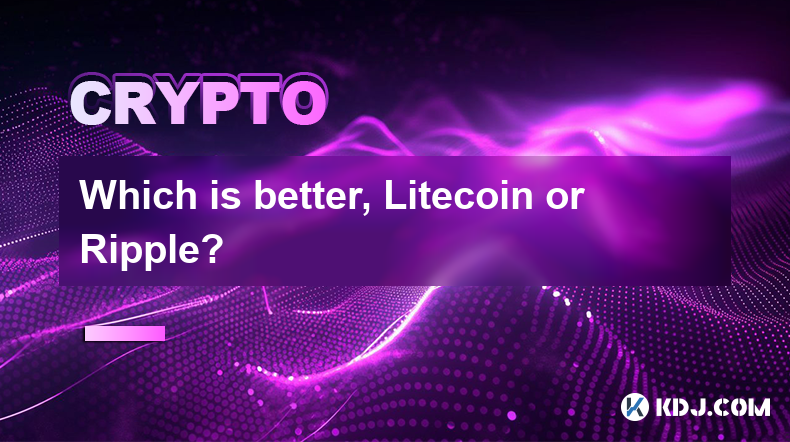
Which is better, Litecoin or Ripple?
Feb 04,2025 at 08:00pm
Key Points:Litecoin: a decentralized, peer-to-peer cryptocurrency based on the Proof-of-Work consensus mechanismRipple: a centralized, enterprise blockchain solution designed for fast and low-cost paymentsDirect comparison of Litecoin vs. Ripple in terms of technology, market capitalization, use cases, and transaction feesPotential benefits and drawback...

When was Litecoin issued?
Feb 04,2025 at 02:36am
When was Litecoin Issued?Key Points:Litecoin's inception and developmentLitecoin's launch date and market dynamicsLitecoin's technical specifications and key featuresLitecoin's Inception and DevelopmentLitecoin, conceived by former Google engineer Charlie Lee, emerged as a fork of Bitcoin in October 2011. Inspired by Bitcoin's revolutionary blockchain t...

Which is better, Litecoin or Tron?
Feb 04,2025 at 10:30pm
Key Points:Similarities between Litecoin and Tron: Decentralized, open-source blockchain platformsDifferences between Litecoin and Tron: Use cases, consensus mechanisms, transaction speedsFactors to consider when choosing between Litecoin and Tron: Investment goals, risk tolerance, specific use casesPotential benefits and drawbacks of Litecoin and Tron:...

How to buy and trade Litecoin?
Feb 04,2025 at 12:24pm
Key Points:Understand the Basics of LitecoinSelect a Suitable Cryptocurrency ExchangeCreate an Account on the ExchangeFund Your AccountPlace a Buy Order for LitecoinSecurely Store Your LitecoinUnderstand Litecoin TradingHow to Buy Litecoin?1. Understand the Basics of LitecoinLitecoin (LTC) is a decentralized digital currency similar to Bitcoin.Created i...

Which has better potential, Litecoin or Ethereum?
Feb 04,2025 at 05:30pm
Key Points:Litecoin and Ethereum are two of the most popular cryptocurrencies in the world.Both coins have their own unique advantages and disadvantages.Litecoin is a faster and cheaper transaction coin than Ethereum.Ethereum is a more versatile platform than Litecoin, and it can be used to create decentralized applications (dApps).Litecoin has a long h...

What country is the founder of Litecoin from?
Feb 04,2025 at 05:55am
Key Points:Litecoin's Founder and the Relationship with Charles LeeLitecoin's Technical Features and Similarities to BitcoinLitecoin's Role in the Cryptocurrency Ecosystem and Its PopularityComparative Analysis of Litecoin with Major CryptocurrenciesLitecoin's Community Involvement and PartnershipsArticle Content:Litecoin's Founder and the Relationship ...

Which is better, Litecoin or Ripple?
Feb 04,2025 at 08:00pm
Key Points:Litecoin: a decentralized, peer-to-peer cryptocurrency based on the Proof-of-Work consensus mechanismRipple: a centralized, enterprise blockchain solution designed for fast and low-cost paymentsDirect comparison of Litecoin vs. Ripple in terms of technology, market capitalization, use cases, and transaction feesPotential benefits and drawback...
See all articles






















































































